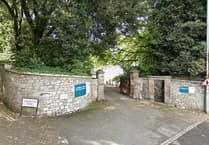A PETITION has been set up to remove the statue of Sir Francis Drake from Tavistock due to the sea captain’s connections to the slave trade.
The call comes in the aftermath of the tearing down of the statue of 17th century figure Edward Colston in Bristol by protesters during a second day of anti-racism protests across the UK.
The demonstrators were showing solidarity with the US Black Lives Matter movement following the death of George Floyd in Minneapolis, in the United States, after a white police officer was filmed kneeling on his neck.
Colston was a member of the Royal African Company that transported men, women and children from Africa to the Americas.
Hundreds of petitions have been started to replace statues and signs of slave traders, colonialists and imperialists including the renaming of Sir John Hawkins Square in Plymouth due to Hawkins being the ‘first slave trader’.
But in response to the calls for the statue of 16th century explorer Drake to be removed, West Devon Borough leader councillor Neil Jory said that the statue ‘should stay’ and serve as a reminder that ‘there was an appallingly dark side to the history of seafaring, exploration and colonisation’.
Cllr Jory said: ‘I was shocked to see the circumstances that led to the death of George Floyd and I understand the depth of feeling that led to the protests which followed. Even before the weekend’s events, we had started to question whether, as a council, there was more that we could, and should, be doing to ensure that our policies do not promote inequality, injustice and discrimination in any way.
‘In my view, it is important the we respond in a positive way to affect and improve the present and the future for all of our residents. I know not everyone will agree with me, but the statue of Sir Francis Drake is an imposing local landmark which celebrates his heroic achievements — including being the first Englishman to circumnavigate the globe and the defeat of the Spanish Armada — and these are an important parts of our heritage.
‘It also serves as a reminder that there was an appallingly dark side to the history of seafaring, exploration and colonisation, that was being played out at that time. In my view, there are lessons to learn from Drake’s involvement in slavery and piracy that should encourage us to continue to strive to create a more just and equitable society. Rather than airbrushing Drake from history, there are stories that should be told and history that should be taught; Drake’s statue gives us the opportunity to do that and to recognise the different aspects of his life and character.
‘Overall, I think the statue should stay but that more should be done to recognise the other parts of this story and to recognise the great wrongs of the past. Let’s use it though as a catalyst to look again at how our society works and to make sure that we build a fairer society with opportunities for all now and in the future. We have an opportunity to do just that though the Tavistock Heritage Trust’s discovery of the Tudor War ship painting as a way of illustrating the town’s links with Maritime History via Drake’s story. This could provide an opportunity to present people with a complete picture of the history of that time both good and bad.’




